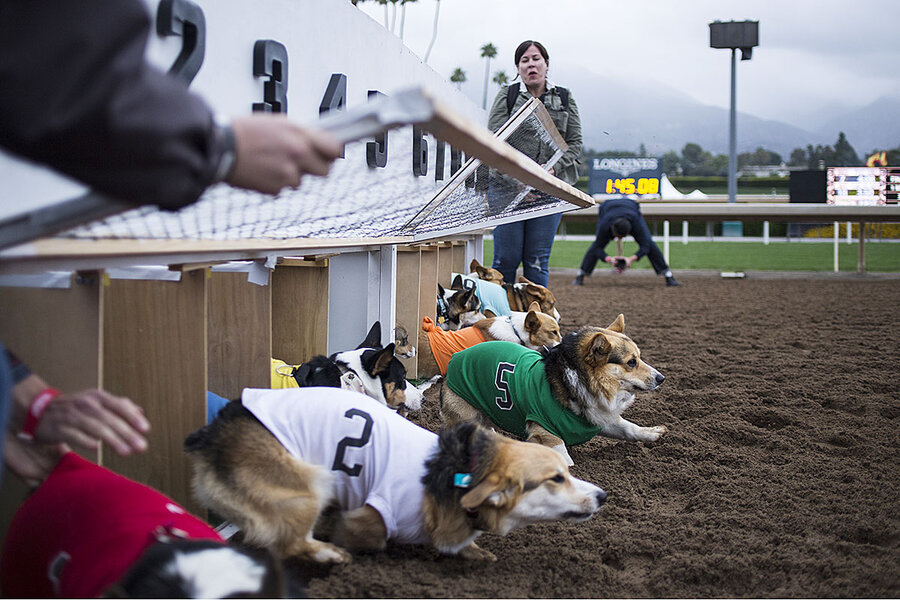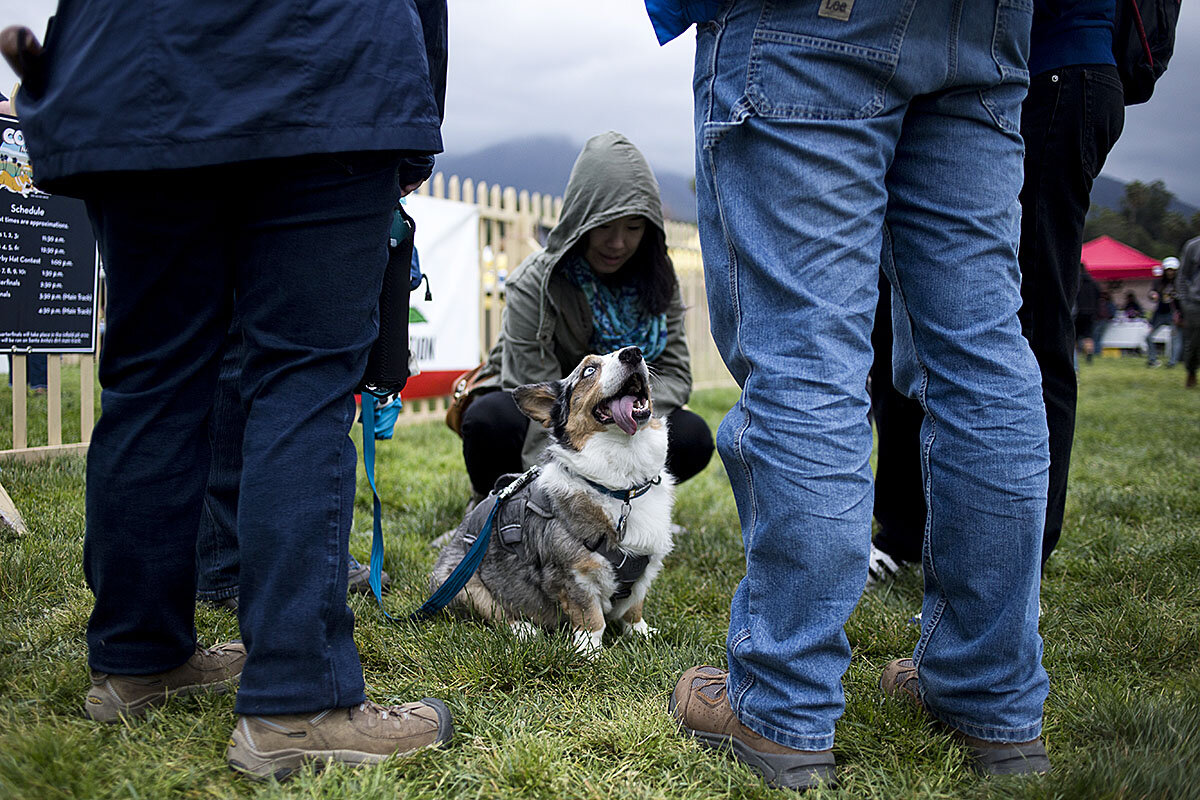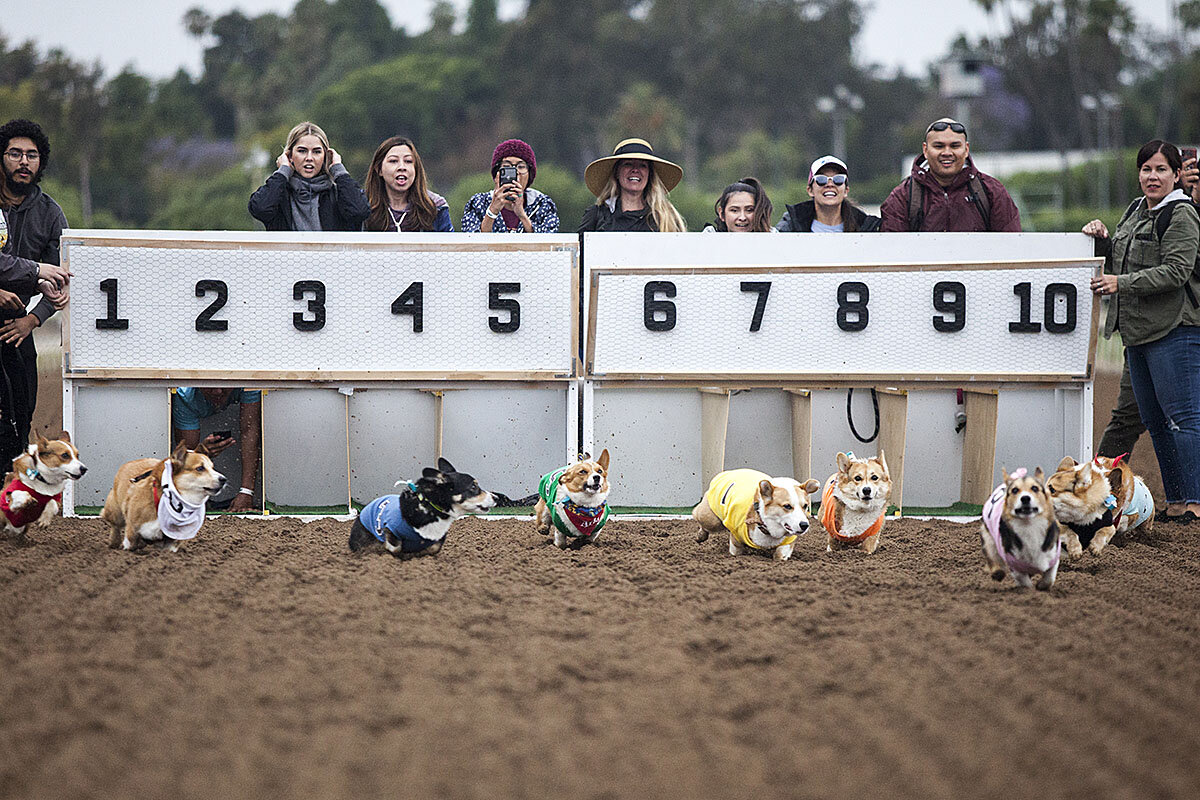It’s a stumpede! Corgis hit the racetrack in California.
Loading...
| Arcadia, Calif.
Move over Indy 500, the racing corgi dogs are here. In a new Memorial Day weekend tradition, 100 of these adorable, furry low-riders vied for a trophy at the second Corgi Nationals on Sunday.
The official winner was Emmet of Pasadena, whose owner helped him “train” for the event by setting up pillows to simulate a starting gate. The real winners? Pretty much everyone who turned out to watch the stubby-legged competitors scramble their way down the same track Seabiscuit once thundered across. Cuteness and pervasive joy were the order of the day for both the dogs and the roughly 2,000 fans gathered at the Santa Anita racetrack near Los Angeles.
“They’re so cute! My heart was melting,” exclaimed Alan Leung, a graduate student who came to the races with a friend who owns a corgi. He admitted he was now a corgi convert.
Why We Wrote This
Who doesn’t need a little more joy in their life? Our reporter, who once was owned by a corgi, checked out a race where stubby-legged dogs go zooming (or not, their choice) down the track Seabiscuit once ran. She found a goofy good time, with lots of human and canine smiles.
“Every time I see one I swoon,” said Katherine Lewis, who repeated “they’re so adorable!” and “Ohhhh,” as she wandered among the crowd of owners, leashes, and pooches. Her husband, toting their baby in a Snugli, vouched for her love affair with the big dogs with little legs and natural smile. He recalled a date where they went to see a movie that included Queen Elizabeth and her famous corgis.
“She actually was brought to tears right there in the theater.”
Corgis have a huge following on social media, and gatherings have become somewhat of a phenomenon in Southern California. In 2012, Kelly and Dan McLemore wanted to get to know other corgi owners and organized a beach day for owners and pets alike. Fifteen people came. Now 14,000 to 15,000 enthusiasts attend the spring and fall beach bashes, which include corgi limbo contests, costumes, food trucks, and specialty vendors.
“It’s a place for all of us to come together and share in our weird corgi obsession,” says Ms. McLemore, of So Cal Corgi Nation.
The McLemores were inspired to organize a corgi “stumpede” by the Wiener Nationals for dachshunds, which take place at the Los Alamitos Race Course not far from Los Angeles. Last year, more than 5,000 people attended the first Corgi Nationals at Santa Anita, at the foot of the stunning San Gabriel Mountains. Contestant slots for this year’s races sold out in less than 90 seconds, says Ms. McLemore. “They went like wildfire.”
The rules are simple. Starting boxes hold 10 corgis, each sporting a colorful, numbered jersey. When the cover is lifted, off they go for 125 feet. Someone has to be at either end, one to place the corgi in the box and the other to coax their pet to the finish line by whatever means works – yelling their canine’s name, or shaking frisbees, pompoms, favorite squeaky toys, and of course, treats.
It’s a fun, family affair, with dogs running in circles after they reach the finish line – or never getting that far, as was the case with most of the corgis in the senior class, who just sat there when the gate opened.
After the qualifying heats – and hat contest – on the grassy infield, the race shifts to the main dirt track for the semi-finals and finals. An announcer gives second-by-second commentary, while a Jumbotron captures every detail of the race, then replays it in slow motion.
Participants from the inaugural Corgi Nationals are wiser the second time around. Tiffany Jensen laughs that last year, her dog, Shortstack Wiggle Butt, simply ran around the starting box and back to his dad when the gate opened. This time, Ms. Jensen trained Shortstack to chase a motorized cart on her cattle ranch in Porterville, where he ran three miles a day.
“I feel amazing! I’m literally about to cry,” said Ms. Jensen, after making it into the finals, and giving her little guy a well-deserved tummy rub.
Alas, Shortstack did not run away with the trophy or flower wreath. That honor went to Emmet, who beat the others by at least a two-corgi length. When interviewed on-camera in the winner’s circle, happy owner Bradley Taylor said he was completely surprised by the win, commenting that his dog simply likes to start off fast.
“What’s next for Emmet?” the announcer wanted to know.
“We’re going to play ball!”









